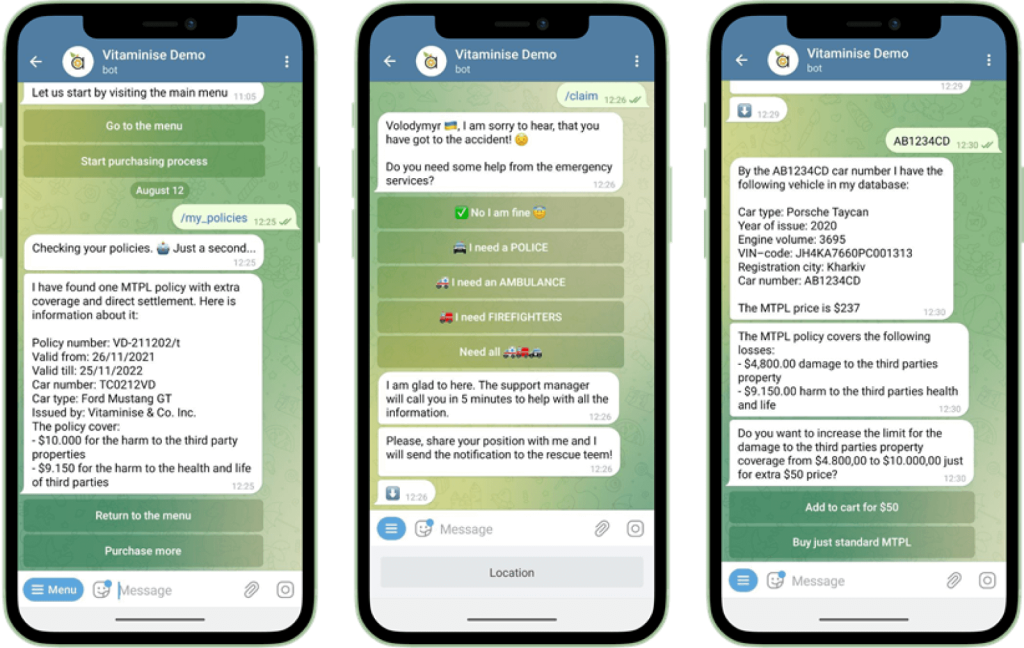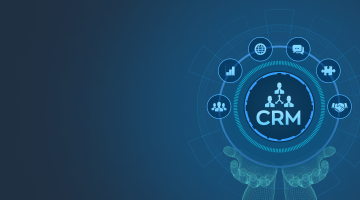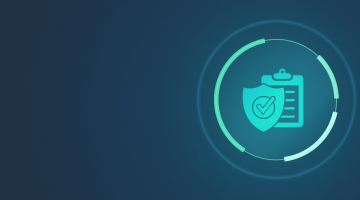
How to create a chatbot for the insurance industry
Today’s insurers are closely studying trends and appreciating the innovative potential of chatbots. Powered by artificial intelligence (AI), they are capable of streamlining the widest range of operations, delivering an ultimate competitive advantage.
According to Statista, the size of the chatbot market in the banking, financial services, and insurance sectors is projected to have grown to $6,8 billion by 2030 as compared to $0,5 in 2019. No wonder because a chatbot is no longer just an interesting messaging interface but a “smart” tool for analyzing and offering products to the target audience. Although, according to experts, it is not yet mature enough.
At DICEUS, we understand the opportunities and values chatbot adoption provides to the insurance sector. That’s why we take an active part in making this technology more mature and available. In this article, you will learn about the use cases of chatbot deployment for insurance organizations, the key benefits of chatbots, and how to develop a chatbot for your company.
5 insurance chatbot trends
Before figuring out how to create a chatbot for insurance agents and companies, let’s explore the latest trends in applying this technology to the insurance sector.
Trend 1 — Personalized user experience
Modern chatbots leverage machine learning algorithms to discover customer behavior and analyze the most frequent requests to optimize scripts of conversational flows and make them more personalized. By getting personalized assistance, customers become more loyal to insurance products and services. Excellent experience encourages people to recommend insurance providers to their friends. Thus, chatbots are becoming a good way to differentiate and provide policyholders with advanced digital capabilities for communication with insurers that was earlier possible only with insurtechs.
Trend 2 — Claim processing via chatbots
The best value a chatbot for insurance can provide is probably claim processing automation. What kind of options do customers traditionally have to report a claim? Usually, claimants must call agents or submit their claims via a website form; both ways are limited. AI-powered chatbots allow customers to make a claim directly via mobile phones from anywhere at any time, giving people more freedom and choice. Chatbots can be integrated with any messenger (WhatsApp, Telegram, Viber, Facebook Messenger, etc.). Besides, modern bots are enriched with voice/image/video recognition technologies, allowing users to not only provide details on incidents but also attach respective proofs in the form of photos or videos. This functionality is game-changing as it significantly decreases claim processing time and speeds up the settlement process.
Trend 3 — Adoption of voice recognition technology
Natural language processing (NLP) technology made it possible to recognize human speech, convert it into text, extract meaning, and analyze the intent. Voice recognition is used in insurance chatbots to simplify customer requests and experiences while interacting with carriers. The latter also use this technology to verify customer identity, detect fraud, and improve customer support.
Trend 4 — Introducing image recognition technology
Along with voice recognition, insurance companies are widely adopting image recognition technologies like OCR (optical character recognition). The latter allows chatbots to recognize text in images and convert it into readable information that can be printed, for instance. Such technologies save time for insurers on data processing, reduce manual and redundant jobs, and automate operations, which, in turn, reduces costs.
Trend 5 — Integration with data analytics
It goes without saying that data is the new gold. By implementing insurance data analytics and integrating it with all digital channels and systems an insurance company uses, insurers can get a 360-degree view of their customers (behavior, claims, most frequent requests, amount of premiums paid vs. policies purchased, converted/unconverted quotes, etc.). Therefore, by owning this data, carriers can optimize their up/cross-selling efforts and find out which channels perform best, and which ones need some improvements.
Want to learn more about insurance software development? Read our article about the life insurance software product development process
The role of AI in chatbot creation
Chatbot trends mentioned above prove the importance of artificial intelligence in building a chatbot. As you see, AI empowers and automates many processes, starting from the first customer touchpoint with an insurance provider and ending with claim settlement. That’s why considering AI before chatbot development is crucial.
To use artificial intelligence and its co-technologies like ML, NLP, and RPA in the most efficient way within virtual assistants/chatbots, insurers have to start with customer experience (CX) research to discover the following things:
- Business goals carriers want to reach with the help of a chatbot, for example, decreasing the workload on the call center
- Customer pain points and frustrations that could be addressed with the help of AI
- Unique/killer features that can be implemented by introducing an AI-fueled chatbot
By answering these questions, insurers, together with software vendors, can find the most appropriate use cases for applying AI to chatbots.
Related article: Discover how AI can help automate claim processing in insurance.
Source: Cognizant
Benefits of using chatbots for insurance businesses
A chatbot provides an enhanced customer experience with self-service functionalities. It provides real-time problem-solving opportunities and more major benefits where that comes from.
24/7 support
Clients get accurate answers to difficult questions at any time. The use of chatbots ensures that the information provided is up-to-date and consistent with the insurer’s policies and standards. Assistance is provided round-the-clock: people can send their requests, report claims, and view policies anywhere at any time.
Efficient operations
A chatbot can accurately determine intent and provide personalized client recommendations. Thanks to that, the likelihood of a conversion can be increased. Automation increases the productivity of customer service departments so that they can devote their time to more important issues.
A chatbot reduces the number of calls and, in general, the need for customers to contact the corporate service center, which helps to optimize processes and leads to overall savings. Thus, resources associated with hiring and training employees can be saved.
Easy integration with messengers
End-to-end integration makes it easy to deploy chatbots on top of popular instant messengers and other real-time sales channels. You can use existing platforms or develop your own environment.
Integrations with core systems
A chatbot is connected to the insurer’s core system and can authenticate the client. The process of sending and checking documents becomes easier. The chatbot can retrieve the client’s policy from the insurer’s database or CRM, ask for additional details, and then initiate a claim.
Fast replies and feedback
Searching for products and filing claims are simplified as well. The client can do both at any time, if necessary, receiving an instant response to the question of interest from a chatbot.
User-friendly AI conversational experience
Machine and deep learning provide chatbots with a contextual understanding of human speech. They can even have intelligent conversations thanks to technologies such as natural language processing (NLP).
Source: Cognizant
How to build a chatbot for insurance
Here are the basic stages of chatbot development that are recommended to follow. At DICEUS, we also follow these stages to deploy the final solution efficiently.
Stage 1 — Customer experience (CX) design
We recommend starting chatbot development with a discovery phase, including CX design. CX specialists conduct in-depth research on insurers’ customers via interviews with current policyholders and prospects as well as competitors’ customers. These experts find out which pain points, challenges, and frustrations consumers have and what things they would like to see improved. For example, many can say that they don’t like to call a call center for assistance and they’d rather file a claim online.
CX research deliverables usually include the following: customer persona descriptions, findings of interviews, user journey maps, and recommended advancements.
Stage 2 — Choosing a chatbot platform
The choice of a chatbot platform depends on many factors, such as the level of sophistication and customization, business goals, customer preferences, etc. The findings of the discovery phase and CX research would help you choose the right platform. Another factor defining the choice of the platform is the chatbot type that fits your goals. The most popular types are rule-based, menu-based, contextual, voice-enabled, and predicative chatbots.
Stage 3 — Conversation flows
Conversational flows and scripts are built and sequenced according to the pre-defined customer target actions, the company’s business goals, tone of voice, branding, and more.
Determine what questions and why most clients are reluctant to answer. There are two things you can do here:
- Revise the phrase. Is the language used simple enough? Is the information requested too sensitive?
- Reduce the number of questions. Perhaps the list is too long, and the interaction is overly time-consuming.
Communication with the bot should have a natural course, without the need for much thought, but with clear control of all details. When developing dialogue scenarios, it is important that conversation topics are close to the purpose the chatbot serves.
Before you create a chatbot, map out your client’s digital journey. Visualize the conversation. Define the value you want to offer, create a mental map of its effective implementation, and then build it into the design. Try to avoid over-gamification.
Stage 4 — Enriching chatbots with AI
The implementation of natural language processing, for example, allows clients to freely exchange messages with a chatbot, which provides detailed feedback and adds personality to the interaction. Essentially, you are using an algorithm to understand your clients. You must be able to map out every possible outcome.
Leverage client behavioral data to optimize conversation design and workflow. Analytics will provide insights that your customer service team can glean from intuition. Chatbots can make them measurable and scalable. They cannot replace the customer service team, but they will take the load off that team and make their workflow more manageable.
Surely, you first need to determine the optimal architecture and operational principles and then choose the tools to implement them. Among code-based frameworks, the market-leading solutions include the Microsoft bot framework, Aspect CXP-NLU, API.ai, and Wit.ai.
After creating an MVP, you can start testing, and then training your chatbot, as well as integrating it with external systems, all of which are quite complex tasks.
Stage 5 — Integration
For better efficiency, chatbots can be integrated with the following solutions:
- Insurance core systems to capture and unite various data for more accurate and clear analytics and reporting
- Payment gateways allow users to pay for policies directly in a chatbot
- Open data portals to capture customer data so that customers don’t need to look for the required documents, attach those, or file forms manually
- Messengers like WhatsApp, Telegram, Viber, Facebook Messenger, and Instagram for higher customer engagement
Stage 6 — Testing
Insurance chatbot development requires thorough testing and quality assurance as any other type of software. Test engineers should check if the bot follows the pre-defined rules, scripts, conversations, sequences, and more. Besides, user acceptance testing is also performed here to check the work of the chatbot by insurers’ customers and get timely feedback to fix all the issues.
Stage 7 — Technical support and maintenance
Once the bot is deployed, it should be supported by a dedicated team. Usually, software vendors provide technical support services. However, if a carrier wants to change something drastically or add new functionalities, maintenance services are required.
DICEUS provides end-to-end chatbot development services for the insurance sector. Our approach encompasses human-centric design, contextualization of communication, scalability, multi-language support, and robust data protection.
With 13 years of experience in insurtech development, we not only know how to make a chatbot more efficient but also developed our own solution for insurers — Vitaminise AI Chatbot — a plug-and-play solution that can be implemented within a few days. Below is a more detailed case study.
Source: Cognizant
Chatbot development case study: DICEUS expertise
Recently, DICEUS implemented Vitaminise Chatbot for a car insurance company that wanted to simplify the policy purchase process for its customers and reduce customer support expenses. The bot allows users to buy the chosen coverage and pay for it without filling in personal data manually, as this is ensured by data auto-filling functionality providing customer personal and vehicle data.
Another convenient feature is filing a claim via the bot. Customers can notify a chatbot of a car accident, provide details, and upload photos of damage as proof. Once the claim is settled, users can also get paid through the chatbot. Here are the key values brought by Vitaminise to the given insurance company:
- Policy purchases in 2-3 minutes via one’s smartphone without the need for manual data entry
- Availability 24/7 worldwide
- Convenient collaboration with agents
- Claims submission and settlement via phone
- FAQ automation

As you see, there’s FAQ automation among the values — by providing answers to the most frequent questions via the chatbot, insurers can reduce costs on customer support, decrease workload on the call center, and improve customer experience and loyalty.
DICEUS offers quick Vitaminise Chatbot implementation for insurance companies. Want to learn more?
Read a full case study.
Conclusion
You don’t need to know how to program a chatbot to improve customer engagement, automate operations, and reduce costs. A reliable software vendor or solution provider can help you with that — just contact us to discuss the requirements and goals you would like to achieve with a chatbot. Our team will develop a custom solution for you or offer to implement our ready-made Vitaminise Chatbot.
FAQ
What are the key steps to initiate the development of a chatbot for an insurance company?
First off, insurers should clearly state their goals, which may sound like “handling customer inquiries mainly through a chatbot” or “providing answers to frequently asked questions through a chatbot.” Secondly, the target audience should be defined to better serve customers considering their demographics. Choosing the chatbot framework and platform is the next crucial stage, followed by conversation flow development and testing. Special attention is also paid to enriching a chatbot with artificial intelligence technologies.
How important is defining objectives and use cases before building an insurance chatbot?
Defining objectives and use cases is crucial for the project’s success. Only by understanding the goals clearly and envisioning how a chatbot will be used can you develop the right solution, bringing true value to business.
Why is understanding the audience essential in building a successful insurance chatbot?
Understanding the target audience (people who will use the chatbot) allows you to sequence conversational flows correctly, use the right language and tone of voice for scripts, and optimize the menu.
How does the choice of platform impact the deployment of an insurance chatbot?
The choice of the chatbot platform usually impacts the ease of deployment, integration options, scalability and performance, costs, and more. Here at DICEUS, we help insurance companies choose the right platform according to their needs, goals, and requirements.
How does designing the conversation flow contribute to a user-friendly insurance chatbot?
Conversational flows should be clear so that a user understands what is meant at once without the need to ask additional questions. The chatbot should provide a human-like conversational experience to users. People should feel like they are speaking with a human assistant who can provide professional and expert support when needed.





